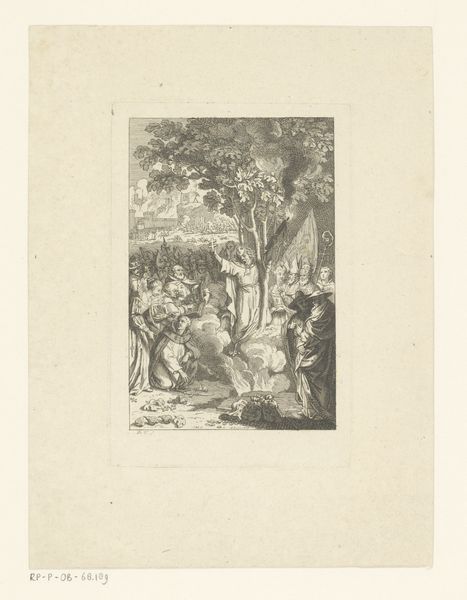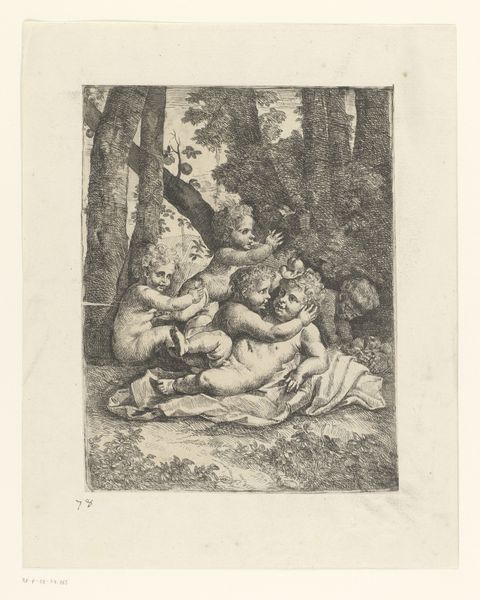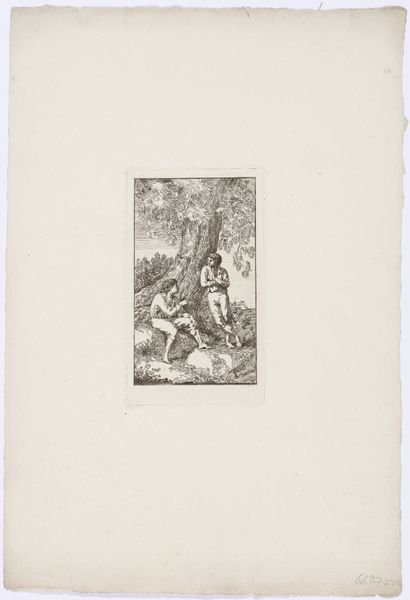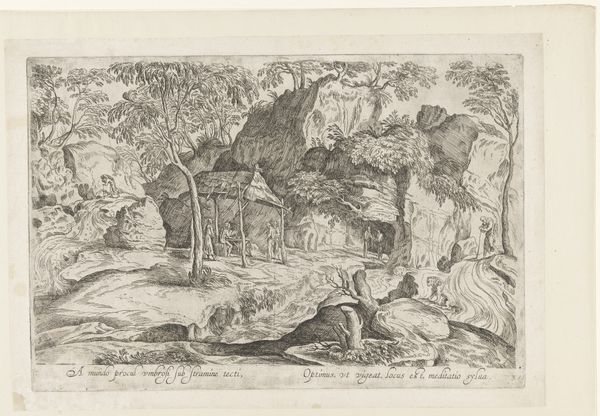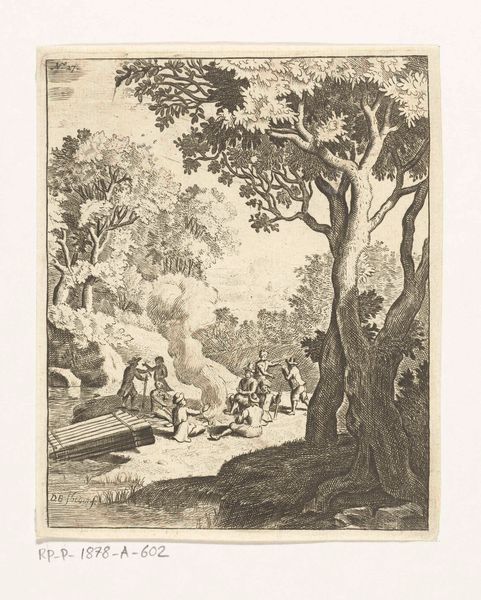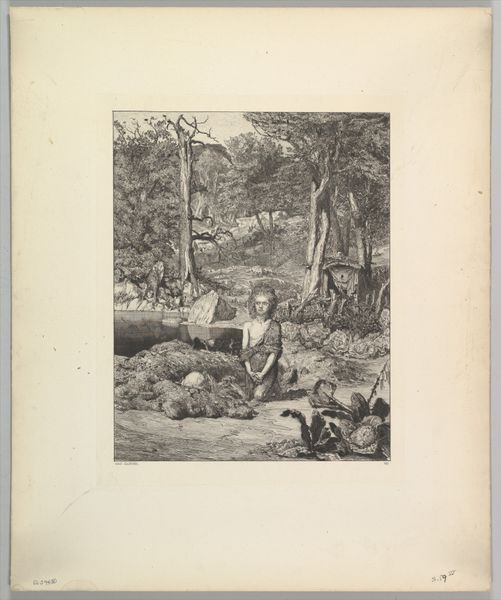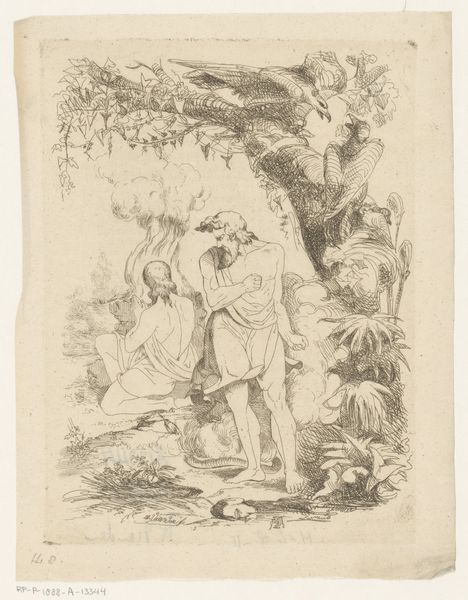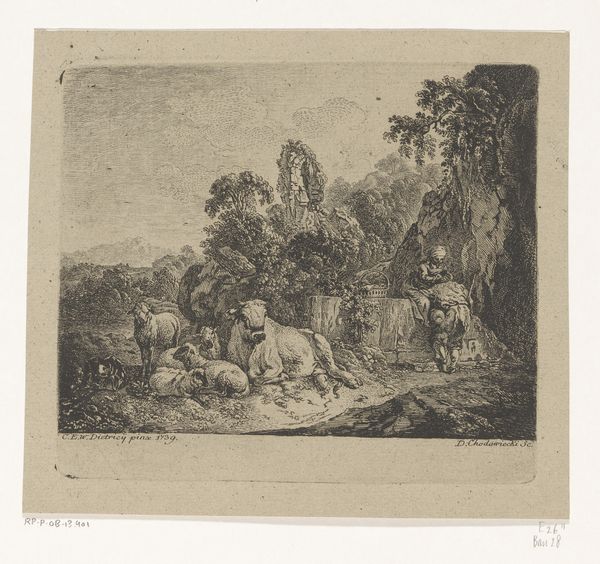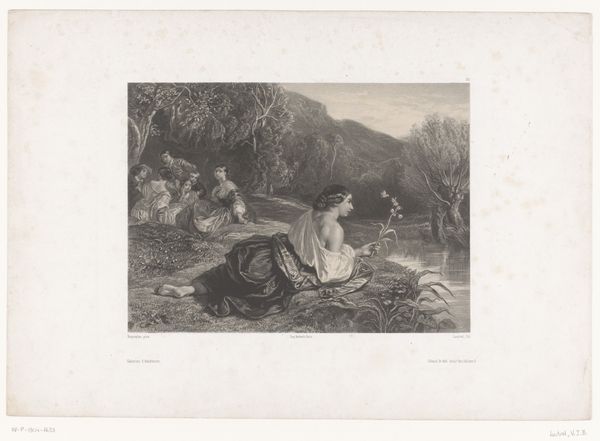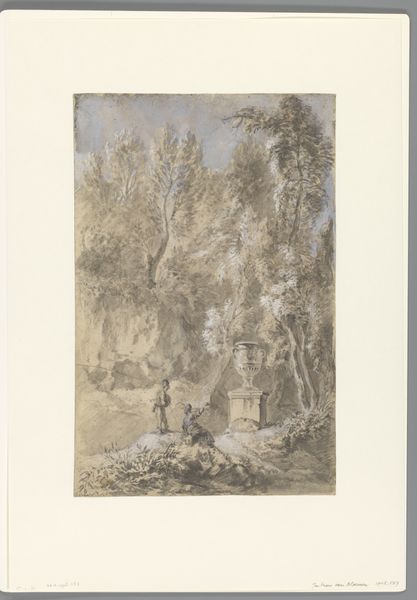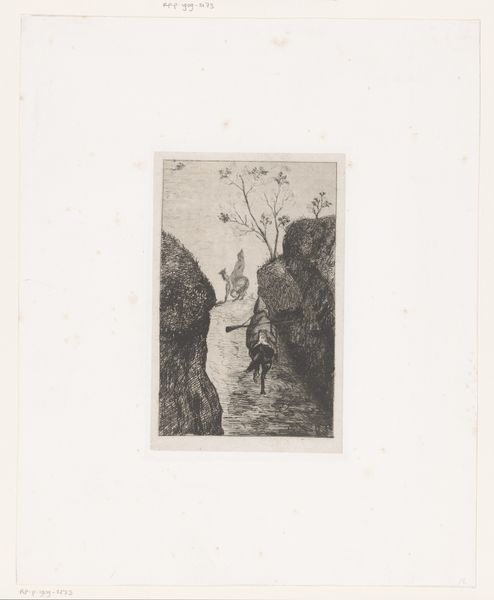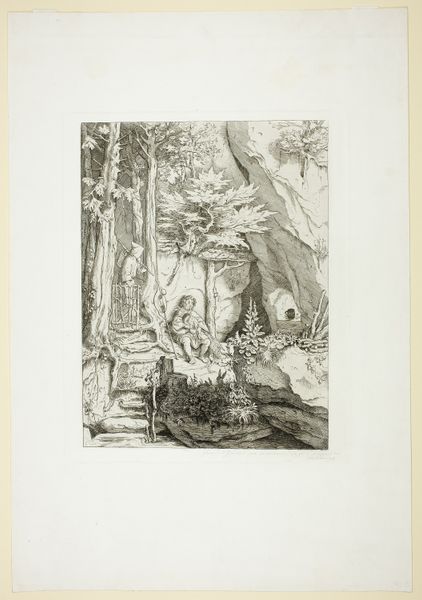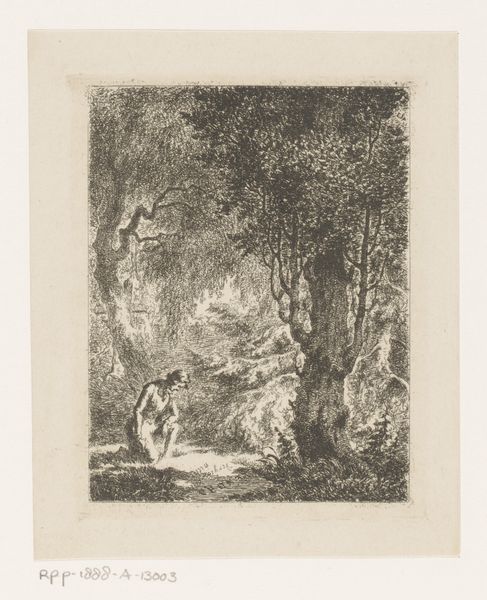
print, etching, engraving
#
baroque
#
ink paper printed
# print
#
etching
#
landscape
#
figuration
#
history-painting
#
engraving
Dimensions: height 192 mm, width 145 mm
Copyright: Rijks Museum: Open Domain
Editor: This etching, “Ariane doodt met pijl en boog een Scyth” made by Abraham Bosse in 1639, depicts a dramatic scene. There’s a figure lying prone, pierced by arrows, while another, presumably Ariane, takes aim with her bow. The piece strikes me as quite theatrical, almost stage-like. What's your interpretation? Curator: Considering Bosse's context, it’s important to look at the print as more than just a representation of a historical scene. The engraving technique and its distribution, specifically within the print market, placed this imagery within a social context. The politics of imagery were particularly charged at that moment in Europe. Have you considered who this "Scyth" may have represented to a 17th-century audience? Editor: Hmm, I hadn't thought of it that way. You mean beyond just being a scene from mythology? So, what kind of political reading could we give this? Curator: Consider the Dutch Republic's position then - a relatively new power. Images like this helped construct ideas of heroism, civilization, and justifiable violence against perceived "barbarians." The act of Ariane taking vengeance becomes a representation of civilized power triumphing over supposed savagery. Notice, too, the landscape framing the scene - is that also making some claims? Editor: Right, the idealized landscape acts as a backdrop, almost legitimizing the event, and making it look timeless. The historical narrative is secondary to the political message, then? Curator: Precisely. It makes me wonder what contemporary prints or digital art will historians scrutinize in similar fashion centuries from now. Editor: I never thought an etching could hold so many layers of political meaning! This gives me a lot to consider. Curator: Indeed, every artwork has a conversation to hold with its time. This piece helps us listen in to a small part of one.
Comments
No comments
Be the first to comment and join the conversation on the ultimate creative platform.
